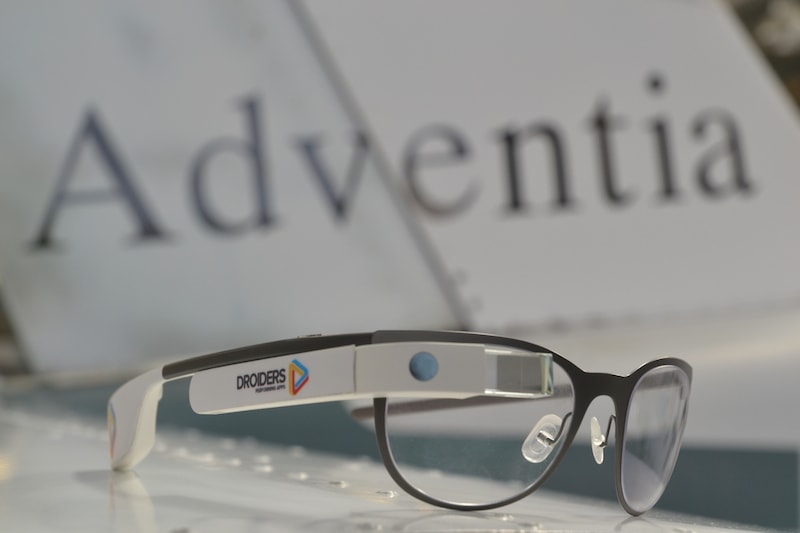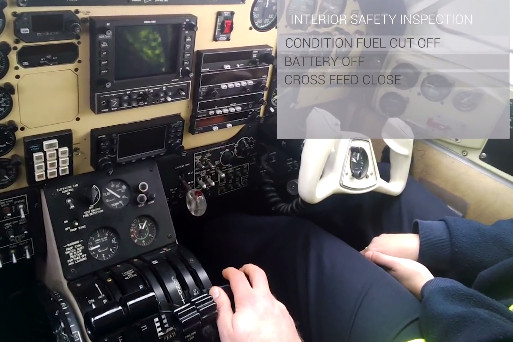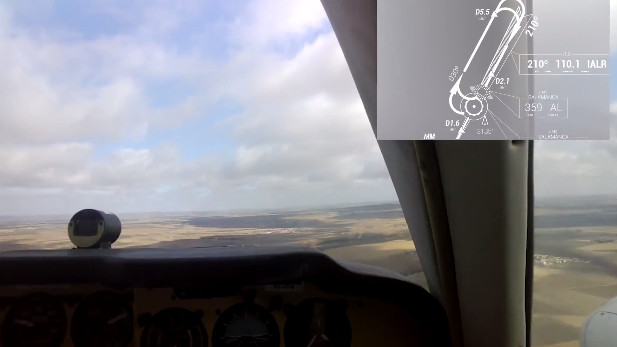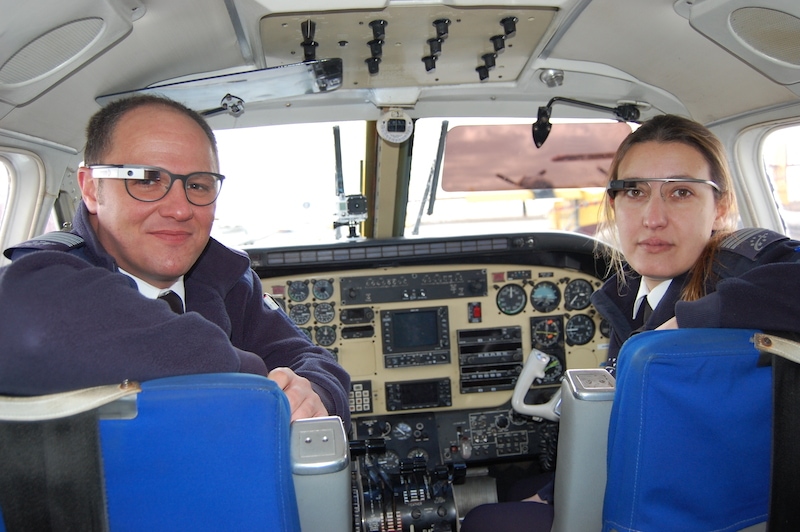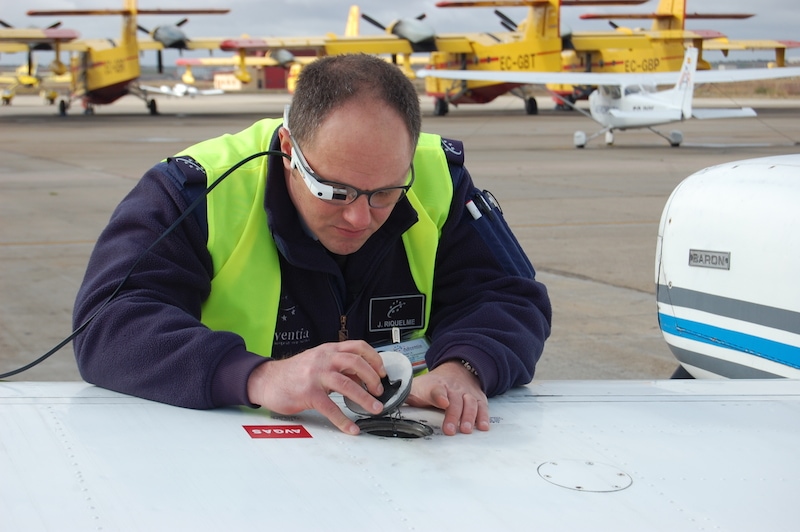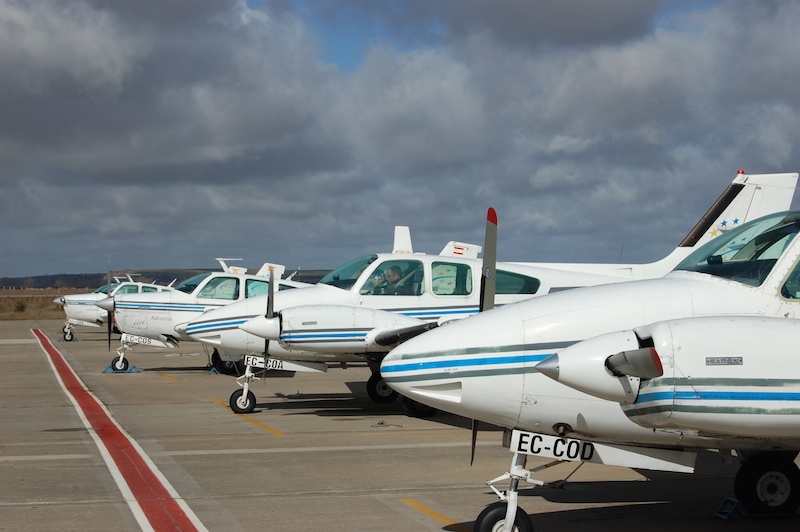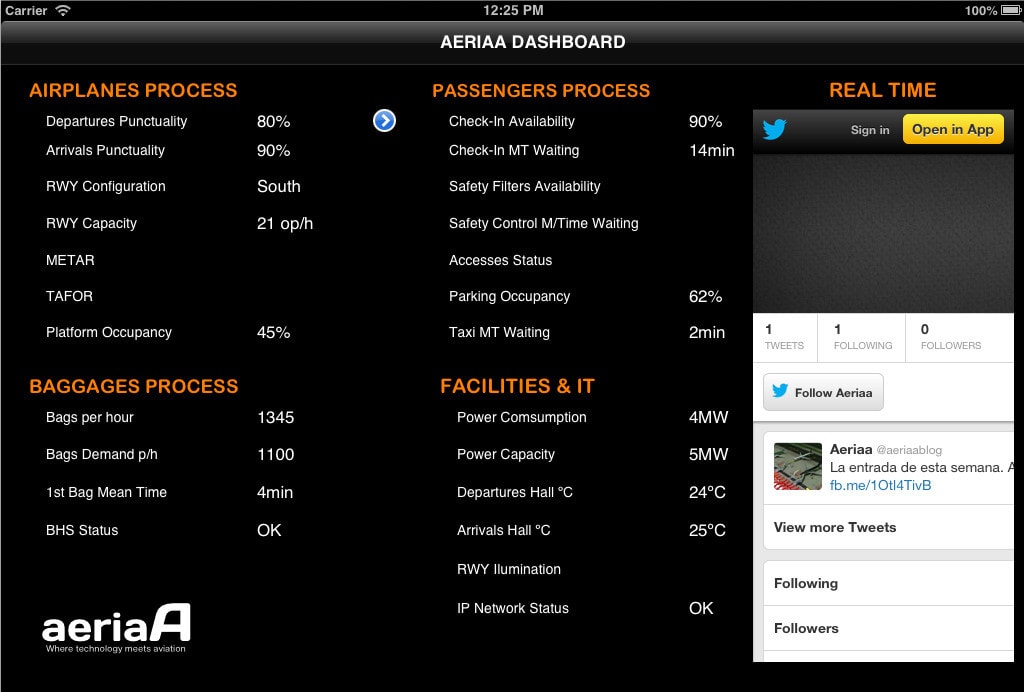On 5th of march 2014, the spanish Flight Training School Adventia European College of Aeronautics flew for the first time in aviation a flight with two pilots wearing Google Glasses. It is the first time of this kind of milestone. This flight has been scheduled for the Pilot Innovation Day and in the workshops “Innovation in the Cockpit” organized by Adventia (Salamanca University Partner). This experience takes part of the research in the application of electronic devices in the aircraft’s cabin, after several new devices analysis, Adventia chose Google Glass for researching its capabilities in the air navigation field so as to improve the training quality of the future pilots.
Google Glass is a wearable device that has a camera, GPS, bluetooth, microphone and a little screen, this device can inform the user in real time issues.
Droiders, a Google official developer partner, is the technological partner of Adventia, together they developed the pilot training app based on the app of Standford University’s Faculty of Medicine for the checklist in surgery. The use of this kind of devices will ease the large number of procedures that the pilots must review before, during and after a flight.
The pilots, Head of Training, Juan Riquelme and Head of Flights, Diana Rodriguez used the Google Glass for:
- Pre-flight’s checklist.
- Takeoff’s procedures.
- Air navigation maps.
- Landing’s checklist.
- Final approach.
[AMAZONPRODUCTS asin=”B00I8W511A”]
They flew a Beechcraft King Air C-90 for this first real flight.
These are the Google Glass advantages pointed out by Adventia:
- Safety. Where the pilots needs to see flight’s data they won’t to put their hands off the controls. This can be included in the Electronic Flight Bag (EFB).
- Productivity. Adventia estimates that using Google Glasses the students will gain a 10% of the practice lessons as an overcome of the real time updating of NOTAMs, air navigation’s lists, checklists, real meteo information, etc.
- Savings. Iberia Airlines, as an EFB’s pioneer, will save about 150.000 euros in fuel per year because the airline is going to reduce the flight bag’s weight (books & paper) about 60kg per flight.
- Aeronautical Training. An airline may have to invest 2 million euros in training its pilots to adapt them to new aircraft and in refresher courses. By using new technology in their training, the students on the Degree in “Commercial Airline Pilot Studies and Air Operations” will be trained in handling electronic devices. Therefore, the number of hours needed to adapt to new flight devices will be reduced, which may mean an optimization of 10% in the investment which goes on the training needed to bridge the technological gap.
- Environmental Sustainability. As recently reported Microsoft in his “Microsoft in aviation” memo, the use of EFB will reduce the carbon footprint of 12.500 vehicles and 7.5 millions paper sheets per year.
The following video shows the iPad’s based EFB deployed by Iberia. See more at Iberia’s press note.
Adventia Glass App
Adventia with the cooperation of the company Droiders has developed an App for completing the checklist of the aircraft operated by Adventia.
With this App it is possible to reduce drastically the existing mistakes based on the paper’s checklists releasing the pilot’s hands. The first point is achieved by including the checklist in Google Glass validating each item with a voice command, not allowing the pilot to continue the checklist until the corresponding item is verified with the voice command by an predefined order.
The second point is achieved by the use of Google Glass himself. Its whole operation is performed either with head movements or voice commands, so the pilot will always have his hands free to perform other actions, the checklist’s check, controls, instruments, radio management, etc.
One of the integrated checklists is the related to the Beechcraft C90 plane. This aircraft is used in the final training phase for the future pilots.
Image credits: Adventia.
For more information:
Project’s website: www.firstgoogleglassflight.com/
Aventia: www.adventia.org/indexe.htm
Droiders: www.droiders.com
Google Glass: www.google.es/glass/start/
Google Glass Development: developers.google.com/glass/
Virgin Atlantic Wereable: www.virgin-atlantic.com/gb/en/footer/media-centre/press-releases/google-glass.html

